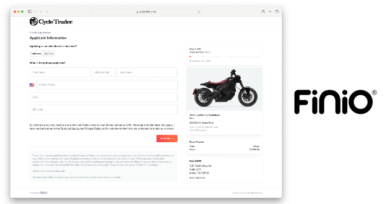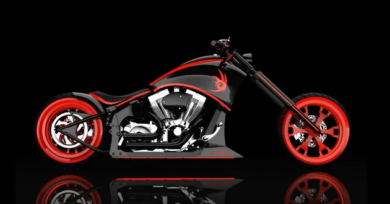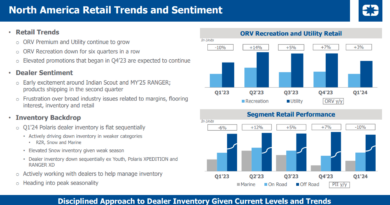OEMs are from Mars, the aftermarket is from Mercury
 I was once told by an executive at a notable aftermarket manufacturer that if I would sell their products to OEMs as original equipment, his brand would build my reputation as well as my product portfolio. I did not believe him because there is seldom any overlap between the marketing and supply chain departments at big OEMs. Most of the buyers and engineers I work with at OEMs don’t read consumer magazines or watch TV shows to get informed. Their level of understanding of the products they are designing and purchasing is much deeper than a “Roundup of the year’s best new gear!” or a sticker on a race vehicle. Product publicity has little relevance to their decisions.
I was once told by an executive at a notable aftermarket manufacturer that if I would sell their products to OEMs as original equipment, his brand would build my reputation as well as my product portfolio. I did not believe him because there is seldom any overlap between the marketing and supply chain departments at big OEMs. Most of the buyers and engineers I work with at OEMs don’t read consumer magazines or watch TV shows to get informed. Their level of understanding of the products they are designing and purchasing is much deeper than a “Roundup of the year’s best new gear!” or a sticker on a race vehicle. Product publicity has little relevance to their decisions.
It was not surprising to me when the OEM supply chain decision-makers universally answered “Who?” when the brand was introduced. On the flip side, there are companies that are 7 or 8-figure a year OEM suppliers that cannot succeed in the aftermarket. These companies sometimes burn through millions of dollars and get nowhere because they don’t understand how to become top-of-mind with dealers and consumers. Of course, this includes getting reviewed in those same “Roundup of the year’s best new gear!” features.
If we say that OEM suppliers are from Mars, named after the war-god of ruthless efficiency, then aftermarket suppliers dwell on Mercury, the storytelling, commerce-god known for his flash and dash. There are stark differences between these two “planets”, and most business organisms are not adapted to thrive on both. If your company is considering a new business development foray into the powersports aftermarket or into OEM sales the following information is for you, backed by two decades of experience:
Aftermarket suppliers
- Frequently run by enthusiasts who are in the industry as much for the passion as the profit.
- Branding including press coverage, social media, advertising and race team affiliation is vital.
- Higher margins for the supplier, should be 30 percent and up.*
- Countless distribution and retail partners are possible. Million-dollar accounts are rare.
- Multiple distribution strategies including selling consumer-direct and private labeling.
- Small manufacturers with niche products and simple manufacturing processes can thrive.
- Engineering expertise is limited.
OEM suppliers
- In business to manufacture, often for diverse industries. Enthusiasm for powersports for its own sake is usually a secondary consideration.
- A small pool of potential OEM customers with very demanding requirements.
- High volume potential, million-dollar account potential throughout the customer base.
- Lower margins, 30 percent-plus being exceptional and in the teens to twenties typical.*
- Supplier branding, advertising, social media, etc. is usually irrelevant. OEMs handle it themselves.*
- Deep engineering knowledge and advanced mass-production processes are vital.
- Tiered relationships are common, but only with value-added at each tier. OEMs mostly avoid suppliers that are private labeling. They want to deal with the source.
Obviously the life forms on these two planets are very different. Catchy ads and Facebook likes don’t prove anything about engineering or costs, and at OEMs, the engineers and buyers will cut to the chase in these areas quickly. Conversely, your company might be selling 100,000 widgets a year to Polaris, but your brand is still at square one when you enter the aftermarket until you generate buzz with a mix of in-store promotions, press coverage and consumer events. From my experience with hundreds of suppliers, I estimate that well under 10 percent can thrive in both worlds. There is no bridge between Mars and Mercury, just cold, empty space that your company will need to cross successfully. You should expect to be treated like an alien when you arrive. Being a superhero in your chosen market helps.
*Of course margins will vary depending upon the type of part ,and some component brands, such as shock absorbers, are of benefit to OEM branding.
Powersports consultant Gary Gustafson is President of G-Force Consulting, a company that provides market research and OEM sales consulting for parts manufacturers, and world-class technology and supplier solutions for OEMs and aftermarket brands. Learn more at www.gforceconsulting.com.









Well said. Short and to the point.
I agree with most of your statements, Gary, but I think are advantages for an OEM supplier in the aftermarket world if it is done right. The fact that TEAM has an extensive engineering group to draw upon makes our products that much more robust and proven. The “street cred” of being a supplier to the large OEM’s is also a great selling point.
I think consumers today are much better educated and have can get much more product information via the internet, so promoting with glitz and gloss isn’t as important as making a great product. That said, promotion and consumer education is still vital.
Steve, thanks.
Mark, thanks for your comments. TEAM is one of the companies in that 10%, a company that can thrive in both worlds. You have the advantage of being a recognized pioneer in the CVT category especially and your company has decades of experience. I would say that OEM suppliers can have an inherent advantage in tooling and engineering-intensive systems like yours. But in other markets like lighting where things can be imported from low-cost mfg countries the big OEM suppliers are finding themselves outmaneuvered in the aftermarket. Ironically those same aftermarket brands often have zero chance of selling engineered systems to OEMs.
Agreed.
Gary,
Spot on assessment. The OEM supplier needs brand identity to accelerate his success in the aftermarket. Without, the supplier must build the link that is his contribution to the OEM’s -products performance, what his product contributes to such performance all without diluting his significance to OEM. Remember the OEM wants to differentiate.
Tom
Thanks Tom. I know you have seen both sides so you know what I am talking about! Gary